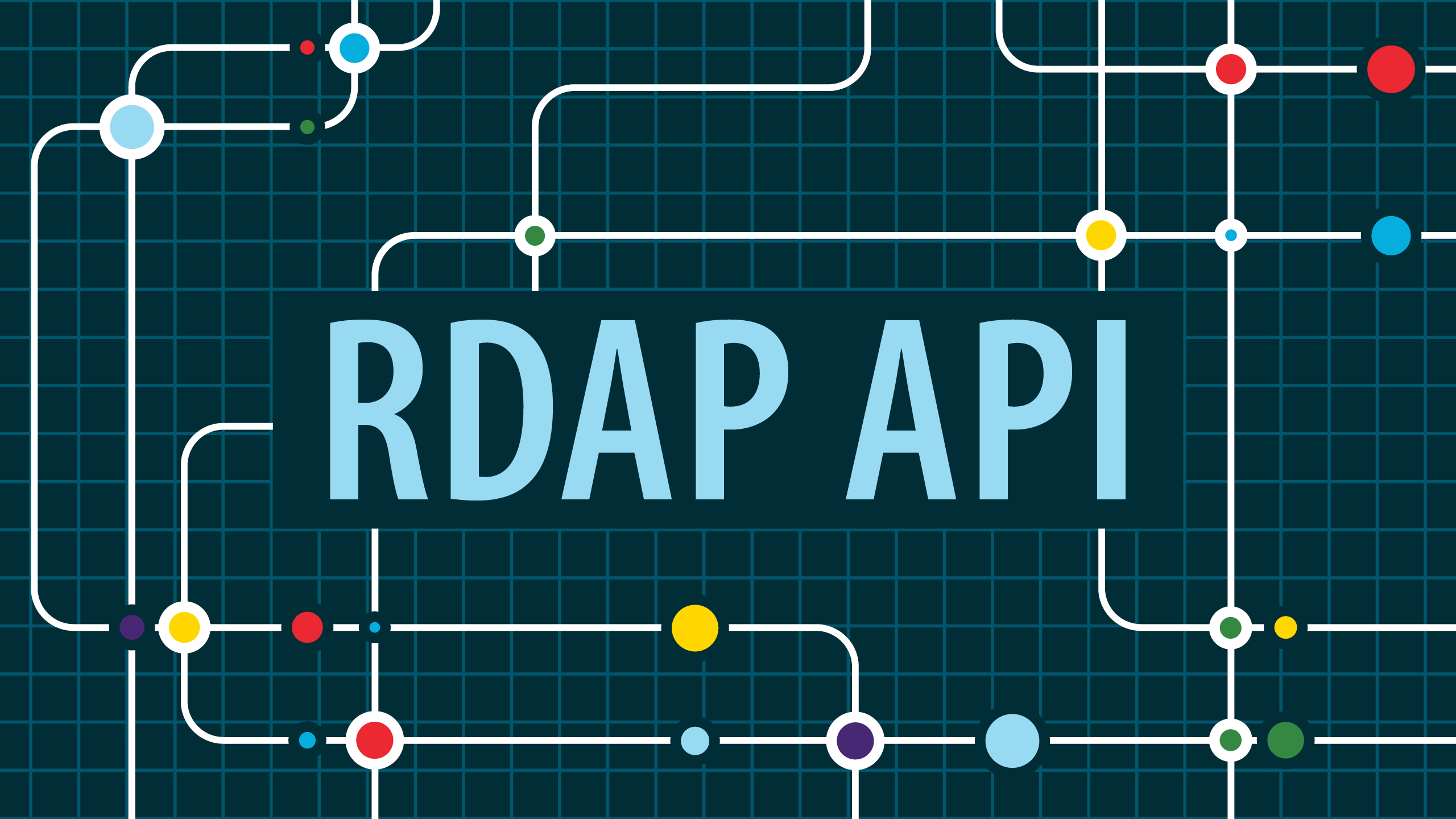
Leveraging New Features in ARIN’s Registration Data Access Protocol API
Last month, work was completed to enhance ARIN’s Registration Data Access Protocol (RDAP) API to allow users to make queries that are equivalent to those available through the Whois-RESTful Web Service (Whois-RWS) API. Read on to learn about the changes and the advantages of transitioning your search activity from Whois-RWS to RDAP.
Historical Context
ARIN’s Whois-RWS, an API for easily searching the Whois database of registered users or assignees of Internet number resources, was deployed in June 2010. At the time, other Regional Internet Registries (RIRs) also developed their own search tools (such as APNIC’s Whois Database). These disparate API solutions were nonstandard and primarily used XML over HTTP for searching the Whois database. They were effective but left much room for improvement.
Five years later, the Internet Engineering Task Force developed draft Requests for Comments (RFCs) to develop a more unified solution: a set of standards that would become RDAP. This new standard did not feature the full set of search options provided by the RIRs’ in-house search APIs, but it was designed to be capable of accessing a much wider range of data, including data from other RIRs and Domain Name Registries. With the release of RFC 7480, RFC 7481, RFC 9082, RFC 9083, and RFC 9224, STD 95 was established, and ARIN implemented its own instance of RDAP.
In an effort to have RDAP reach feature parity with the existing RIR Whois search tools, the RDAP RIR Search document defined additional search options for IP networks and Autonomous System Numbers (ASNs). Now, ARIN’s RDAP API is capable of the full search features found in Whois-RWS.
New Queries Added to RDAP
On 21 May 2025, a richer search functionality of new search queries was added to ARIN’s RDAP API, covering IP networks, reverse domains, ASNs, and entities.
Here’s the full list:
IP Network Searches
- Search IP Networks by Handle
- Search IP Networks by Name
- Search IP Networks by rdap-top Relation and IP Address or Range
- Search IP Networks by rdap-bottom Relation and IP Address or Range
- Search IP Networks by rdap-up Relation and IP Address or Range
- Search IP Networks by rdap-down Relation and IP Address or Range
- Search IP Networks by Entity Handle
- Search IP Networks by Entity Name
- Search IP Networks by Entity Email
- Search IP Networks by Entity Role
Reverse Domain Searches
- Search Reverse Domains by rdap-top Relation and Reverse Domain Name
- Search Reverse Domains by rdap-bottom Relation and Reverse Domain Name
- Search Reverse Domains by rdap-up Relation and Reverse Domain Name
- Search Reverse Domains by rdap-down Relation and Reverse Domain Name
ASN Searches
- Search ASNs by Handle
- Search ASNs by Name
- Search ASNs by Entity Handle
- Search ASNs by Entity Name
- Search ASNs by Entity Email
- Search ASNs by Entity Role
Entity Searches
Why Make the Switch to RDAP
If you have been using ARIN’s Whois-RWS API because of the advanced search options, the time has come to consider the benefits of using RDAP:
- RDAP is an Internet standard, with well-defined, standardized, and machine-readable JSON query and response formats.
- RDAP can access data from other RIRs through HTTP redirection.
- RDAP is secured through HTTPS with Transport Layer Security (TLS).
- RDAP can be accessed through a command-line utility like cURL and through various RDAP clients.
- RDAP is now at parity with nonstandard APIs like ARIN’s Whois-RWS.
What This Means for You
If you’re reading this, odds are the recent improvements to the RDAP API can give you a new set of tools to effectively meet your needs. Here are examples of the valuable ways RDAP can be used to support various roles:
- Cybersecurity and Threat Intelligence: Trace phishing domains, track malicious actors, and map infrastructure used in attacks.
- Legal and Compliance: Identify cybercriminals, support digital forensics, and comply with data protection regulations.
- Network Administration: Diagnose routing issues, validate IP allocations, and coordinate with other network owners.
- Domain Research and Management: Check domain expiration dates, discover domain availability or previous ownership, and monitor domain activity.
To learn more about how to fully utilize the improved RDAP API, visit our Whois/Registration Data Access Protocol (RDAP) page.
Want to be the first to receive updates like this? Subscribe to the ARIN Blog.
Recent blogs categorized under: Updates
GET THE LATEST!
Sign up to receive the latest news about ARIN and the most pressing issues facing the Internet community.
SIGN ME UP →Blog Categories
Caribbean • Outreach • Internet Governance • Grant Program • Tips • RPKI • IRR • IPv6 • Public Policy • Elections • ARIN Bits • Fellowship Program • Training • Security • Updates • Guest Post • Data Accuracy • Business Case for IPv6 • IPv4 • Customer Feedback


